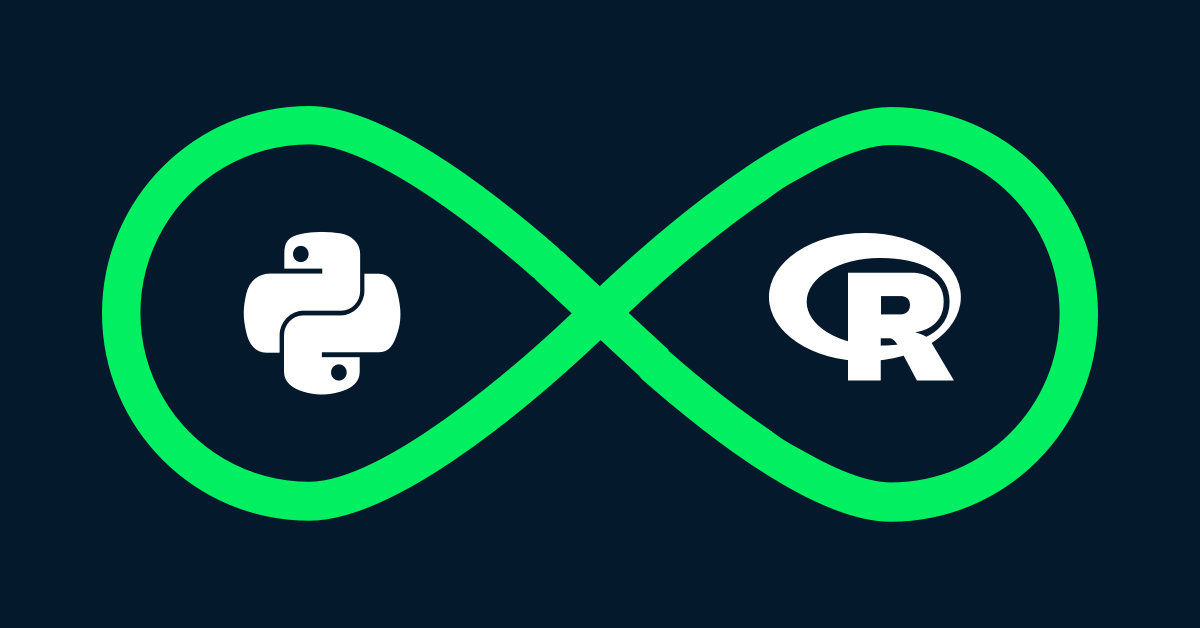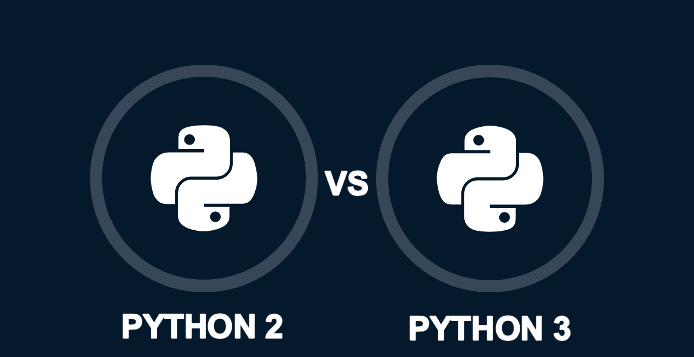Course
If you are reading this article, you are likely just at the beginning of your data science journey. You will probably know by now that learning to code is a critical milestone for every aspiring data professional. Plus, you may have already heard about the Python vs R debate, and you may need help deciding which one to learn. If you are in this situation, don’t panic: most data professionals were in your situation once.
Python and R are the two most popular programming languages for data science. Both languages are well suited for any data science tasks you may think of. The Python vs R debate may suggest that you have to choose either Python or R.
While this may be true for newcomers to the discipline, in the long run, you’ll likely need to learn both. Rather than seeing the two languages as mutually exclusive, you should see them as complementary tools that you can use together depending on your specific use case.
What makes R and Python the perfect candidates for data science? In this article will cover what Python and R are used for, the key differences between R and Python, and provide some factors to consider to choose the right language for your needs.
Now that we've established that Python and R are both good, popular choices, there are a few factors that may sway your decision one way or the other.
Why Choose Python?
Python is a general-purpose, open-source programming language used in various software domains, including data science, web development, and gaming.
Launched in 1991, Python is one of the most popular programming languages in the world, occupying the top position in several programming language popularity indices, such as the TIOBE Index and the PYPL Index.
One of the reasons for the worldwide popularity of Python is its community of users. Python is backed by a vast community of users and developers who ensure the smooth growth and improvement of the language, as well as the continuous release of new libraries designed for all kinds of purposes.
Python is an easy language to read and write due to its high similarity with human language. In fact, high readability and interpretability are at the heart of the design of Python. For these reasons, Python is often cited as a go-to programming language for newcomers with no coding experience.
Over time, Python has been gaining popularity in the field of data science thanks to its simplicity and the endless possibilities provided by the hundreds of specialized libraries and packages that support any kind of data science task, such as data visualization, machine learning, and deep learning.
Why Choose R?
R is an open-source programming language specifically created for statistical computing and graphics.
Since its first launch in 1992, R has been widely adopted in scientific research and academia. Today, it remains one of the most popular analytics tools used in both traditional data analytics and the rapidly-evolving field of business analytics. It ranks 11th and 7th position in the TIOBE Index and the PYPL Index, respectively.
Designed with statisticians in mind, with R, you can use complex functions within a few lines of code. All kinds of statistical tests and models are readily available and easily used, such as linear modeling, non-linear modeling, classifications, and clustering.
The extensive possibilities R offers are mostly due to its huge community. It has developed one of the richest collections of data-science-related packages. All of them are available via the Comprehensive R Archive Network (CRAN).
Another feature that makes R particularly remarkable is the power to generate quality reports with support for data visualization and its available frameworks to create interactive web applications. In this sense, R is widely considered the best tool for making beautiful graphs and visualizations.
R vs Python: Key Differences
Now that you’re a little more familiar with Python and R, let's compare them from a data science perspective to assess their similarities, strengths, and weaknesses.
Purpose
While Python and R were created with different purposes –Python as a general-purpose programming language and R for statistical analysis–nowadays, both are suitable for any data science task. However, Python is considered a more versatile programming language than R, as it’s also extremely popular in other software domains, such as software development, web development, and gaming.
Type of Users
As a general-purpose programming language, Python is the standard go-to choice for software developers breaking into data science. Plus, Python’s focus on productivity makes it a more suitable tool to build complex applications.
By contrast, R is widely used in academia and certain sectors, such as finance and pharmaceuticals. It is the perfect language for statisticians and researchers with limited programming skills.
Learning curve
Python’s intuitive syntax is considered one of the closest programming languages to English. This makes it a very good language for new programmers, with a smooth and linear learning curve. Although R is designed to run basic data analysis easily and within minutes, things get harder with complex tasks, and it takes more time for R users to master the language.
Overall, Python is considered a good language for beginner programmers. R is easier to learn when you start out, but the intricacies of advanced functionalities make it more difficult to develop expertise.
Popularity
Although new programming languages, like Julia, are recently gaining momentum in data science, Python and R remain the absolute kings in the discipline.
However, in terms of popularity –always a very slippery concept– the differences are striking. Python has consistently outranked R, especially in recent years. Python ranks first in several programming language popularity indexes. This is due to the widespread use of Python in multiple software domains, including data science. By contrast, R is mostly employed in data science, academia, and certain sectors.
Common Libraries
Both Python and R have robust and extensive ecosystems of packages and libraries specifically designed for data science. Most packages in Python are hosted in the Python Package Index (PyPi), whereas R packages are normally stored in the Comprehensive R Archive Network (CRAN).
Below you can find a list of some of the most popular data science libraries in R and Python.
R packages:
- dplyr: It is a data manipulation library for R.
- tidyr: a great package that will help you get your data clean and tidy.
- ggplot2: the perfect library for visualizing data.
- Shiny: It is the ideal tool for creating interactive web apps directly from R.
- Caret: one of the most important libraries for machine learning in R.
Python packages:
- NumPy: provides a large collection of functions for scientific computing.
- Pandas: perfect for data manipulation.
- Matplotlib: the standard library for data visualization.
- Scikit-learn: is a library in Python that provides many machine learning algorithms.
- TensorFlow: a widely used framework for deep learning.
Common IDEs
An IDE, or Integrated Development Environment, enables programmers to consolidate the different aspects of writing a computer program. They are powerful interfaces with integrated capabilities that allow developers to write code more efficiently.
In Python, the most popular IDEs in data science are Jupyter Notebooks and its modern version, JupyterLab, as well as Spyder.
As for R, the most commonly used IDE is RStudio. Its interface is organized so that the user can view graphs, data tables, R code, and output all at the same time.
Python vs R: A Comparison
Below, you can find a table of differences between R and Python:
|
R |
Python |
|
|
Purpose |
Very popular in academia and research, finance and data science |
Well-suited for many programming domains, including data science, web development, software development, and gaming |
|
First Release |
1993 |
1991 |
|
Type of Language |
General-purpose programming language |
General-purpose programming language |
|
Open Source? |
Yes |
Yes |
|
Ecosystem |
Nearly 19,000 packages available in the Comprehensive R Archive Network (CRAN) |
+300,000 available packages in the Python Package Index (PyPi) |
|
Ease of Learning |
R is easier to learn when you start out, but gets more difficult when using advanced functionalities. |
Python is a beginner-friendly language with English-like syntax. |
|
IDE |
RStudio. Its interface is organized so that the user can view graphs, data tables, R code, and output all at the same time. |
Jupyter Notebooks and its modern version, JupyterLab, and Spyder. |
|
Advantages |
|
|
|
Disadvantages |
|
|
|
Trends |
11th in TIOBE and 7th in PYPL (December 2022) |
1th in TIOBE and 1th in PYPL (December 2022) |
R vs Python: Which Language Should You Learn?
Despite their strengths and weaknesses, the truth is there is no single programming language that is best for every problem that may pop up during your data science journey.
Plus, it is always important to assess the context. Before making any choice, you should ask yourself several questions: Do you have programming experience? What programming language do your colleagues use? What kind of problems are you trying to solve? What are your areas of interest within data science?
Once you have answered these questions, you can choose one of the two. In any case, don’t panic: both R and Python are excellent options for data science. That’s why at DataCamp, we have prepared an extensive catalog of courses and tracks to help you through. Check out the following resources and get started today!
- A large course catalog with +380 data science courses covering programming, statistics, visualization, and more.
- Our Introduction to Python and Introduction to R Courses can get you started with the basics of the two languages, giving you a taster of what there is to learn.
- Comprehensive and certified career tracks to move from zero to hero in data science. Check out our Python Fundamentals and R programming tracks.
- Subscribe to the DataFramed podcast
- Check out our Python for data science cheat sheet, and our R basics cheat sheet.
Python vs R for Data Science: An Infographic
The below infographic "When Should I Use Python vs. R?" is for anyone interested in how these two programming languages compare to each other from a data science and analytics perspective, including their unique strengths and weaknesses. Click the image below to download the infographic and access the embedded links.
Python vs R FAQs
What is the main difference between Python and R?
Python is a general-purpose programming language, while R is a statistical programming language. This means that Python is more versatile and can be used for a wider range of tasks, such as web development, data manipulation, and machine learning. R, on the other hand, is primarily used for statistical analysis and data visualization.
Which is easier to learn, R or Python?
Both Python and R are relatively easy to learn, especially if you already have some programming experience. People will debate which is easier for newcomers; both have a relative simple syntax, although Python may just edge it.
Which language is more popular?
Python is currently more popular than R, especially among software developers and data scientists. However, R remains a popular choice among statisticians and data analysts.
Which language has a better ecosystem for data analysis and machine learning?
Both Python and R have a large number of libraries and frameworks for data analysis and machine learning. Python has popular libraries like Pandas, NumPy, and scikit-learn, while R has packages like dplyr, tidyr, and caret. Ultimately, the choice of language may come down to personal preference and the specific needs of your project.
Can I use Python and R together?
Yes, you can use Python and R together in various ways. For example, you can use Python to process and clean your data and then use R to visualize and analyze the data. You can also use the rpy2 library to call R functions from within Python or use tools like Jupyter notebooks to mix code from both languages in the same document.



